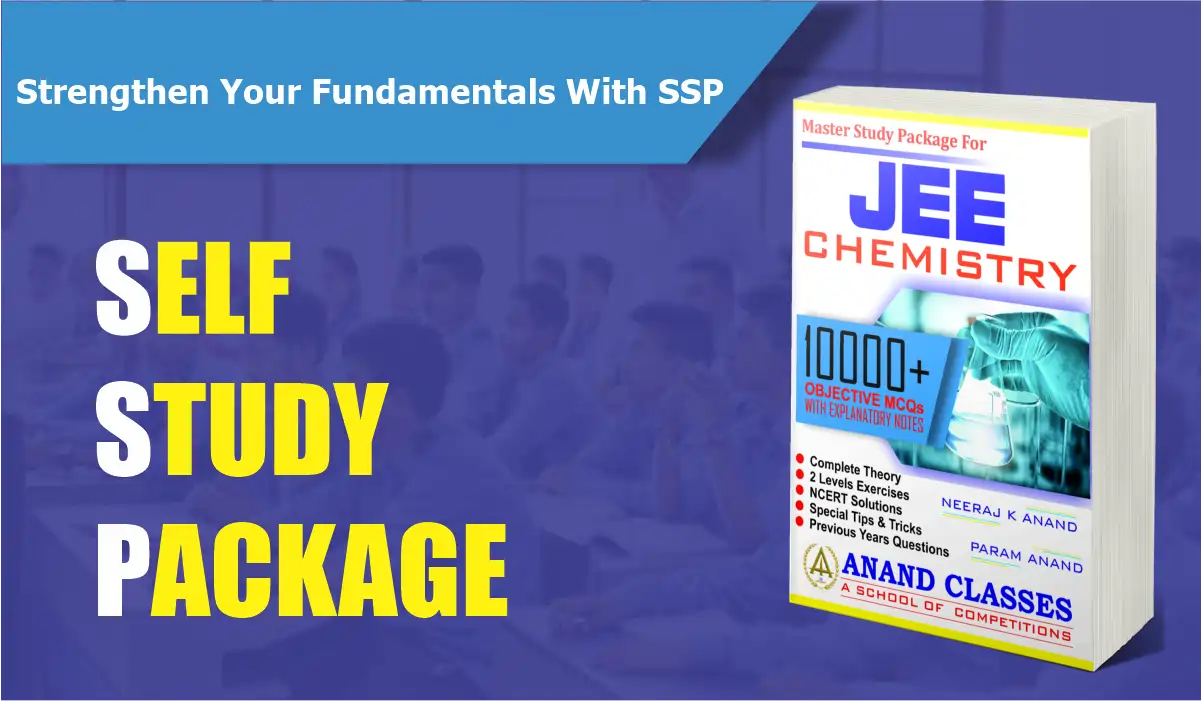Probability NCERT Solutions Class 11 Maths Chapter 16 Exercise 16.1 16.2 16.3 Miscellaneous Free pdf Notes Study Material download-Anand Classes |
NCERT solutions for Class 11 maths Chapter 16 Probability takes forward our journey into the world of probability with the introduction to axiomatic probability. students have already learned about classical probability where in order to obtain the probability of an event, we find the ratio of the number of outcomes favorable to the event, to the total number of equally likely outcomes. However, the utility of classical and statistical probability has got limitations when the number of outcomes is infinite, and to get over this limitation, axiomatic theory of probability was given in 1933 by A.N Kolmogorov, which is being explained in this NCERT solutions Class 11 maths Chapter 16 Probability
Download the NCERT Book for Class 11 Maths Chapter 16 – Probability
Number of questions in each exercise of NCERT Solutions for Class 11 Maths Chapter 16 – Probability
The understanding of the sample space of outcomes and that the event is a subset of this sample space is fundamental to understanding the axiomatic approach to probability. Next is the understanding of set operations like union and intersection and then applying probability theory to it. The NCERT solutions class 11 maths Chapter 16 has tried achieving the objective of traversing the subject of probability by starting with a recap of the statistical probability and classical probability and then explaining the limitations of these two approaches, thereby explaining the necessity of the axiomatic probability. The chapter further then explains the various components of probability like sample space and the kind of events and how it is used to calculate probability.
The chapter explores the concept of sample space, sample points, events, and their types like impossible events, sure events and complementary events, set operations on events, mutually exclusive events, and then using all this foundation of events and sample space to find the probability using axiomatic concepts. The detailed formulas and facts regarding the same can be found in the pdf of the Class 11 maths NCERT solutions Chapter 16 Probability given below and also download the exercise-wise solutions provided in the links below.
- NCERT Solutions Class 11 Maths Chapter 16 Ex 16.1
- NCERT Solutions Class 11 Maths Chapter 16 Ex 16.2
- NCERT Solutions Class 11 Maths Chapter 16 Ex 16.3
- NCERT Solutions Class 11 Maths Chapter 16 Miscellaneous Exercise
It is because of practical considerations that the theory of probability was created. Somewhere in the 16th century, the first book around this concept was published. Thereafter it was worked upon by a number of mathematicians, eventually leading to probability as set functions and in the form which we use today. Thus, the students must ensure to imbibe the learnings from this chapter as this will help in competitive exams too. A brief segregation of the questions in each section of the NCERT solutions Class 11 Maths Chapter 16 Probability is given below :
- Class 11 Maths Chapter 16 Ex 16.1 – 16 Questions
- Class 11 Maths Chapter 16 Ex 16.2 – 7 Questions
- Class 11 Maths Chapter 16 Ex 16.3- 21 Questions
- Class 11 Maths Chapter 16 Miscellaneous Exercise – 10 Questions
Important Topics and Subtopics of NCERT Solutions for Class 11 Maths Chapter 16 – Probability
Topics Covered: The Class 11 Maths NCERT solutions Chapter 16 covers a range of important topics such as the definition of sample space and sample points, different types of events like impossible, sure, complementary, mutually exclusive events, etc. Translation of operations of events using set theory and thus deriving the probability of union, the intersection of events is also discussed in detail.
Total Questions: Class 11 maths Chapter 16 Probability consists of 44 questions curated by the experts. Out of these, 28 are long answers, 8 are moderate, and 8 are easy problems. Apart from these, there are an extra 10 sums in the miscellaneous exercise.
The major topics and subtopics explained in Chapter 16 Probability of NCERT Solutions for Class 11, include
16.1 – Introduction
A brief description of the definition of probability and related terms is provided in this section. In simple terms, the probability is the ratio of the number of outcomes favourable to the event to the total number of outcomes. The related terms, viz. experiment, sample space, events, outcomes and so on.
16.2 – Random Experiments
16.2.1 Outcomes and sample space
The definition of random experiment subject to the required conditions and related terms are explained with examples such as tossing a coin and throwing a pair of dice so that students can easily grasp the concept.
16.3 – Event
16.3.1 Occurrence of an event
16.3.2 Types of events
16.3.3 Algebra of events
16.3.4 Mutually exclusive events
16.3.5 Exhaustive events
This topic has been explained with many examples and experiments to give a clear idea of the related terms and types of events. Algebra of events explains the intersection, union, difference and complement of events, etc.
16.4 – Axiomatic Approach to Probability
16.4.1- Probability of an event
16.4.2- Probabilities of equally likely outcomes
16.4.3 Probability of the event ‘A or B’
16.4.4 Probability of event ‘not A’.
Another way of describing the probability of an event is the axiomatic approach. This is well explained in Class 11 Maths Chapter 16 of the NCERT curriculum. Also, there are many examples and practice problems available to understand the concept easily.
The summary of the concepts explained in the NCERT Solutions of ANAND CLASSES’S are listed below
- A set of all possible outcomes is called sample space
- Sample points are the elements of sample space
- A subset of the sample space is called an event
- Impossible event: The empty set
- Sure event: The whole sample space
- Complementary event or ‘not event’: The set A′ or S – A
- Event A or B: The set A ∪ B
- Event A and B: The set A ∩ B
- Event A and not B: The set A – B
- Mutually exclusive event: A and B are mutually exclusive if A ∩ B = φ
- Exhaustive and mutually exclusive events
Features of NCERT Solutions for Class 11 Maths Chapter 16 Probability
The solutions of Class 11 Maths NCERT questions provided by ANAND CLASSES’S help the students to strengthen their basics. They also support boosting their confidence level. All the solutions of NCERT textbook questions for Probability are a valuable aid for the students in their assignments and competitive exams. Also, the content is well-structured so that students cannot skip any point during their preparation.
List of Formulas in NCERT Solutions Class 11 Maths Chapter 16 – Probability
NCERT solutions Class 11 Maths Chapter 16 covers the probability of different types of events. Once we go through the basic understanding of sample space and the events, the different kinds of events based on their nature lead us to different probability axioms, which use set operations. In order to solve probability, one must go through some of the easy formulas from this chapter mentioned below:
- Two events A and B are mutually exclusive events is A ∩ B = φ
- Probability of an event P(A) = n(A)/n(S) where
- n(A) = number of elements in the set A
- n(S) = number of elements in set S
- For any two events A and B , P(A or B) = P(A) + P(B) – P(A and B)
- If A and B are mutually exclusive events then P(A or B) = P(A) + P(B)
Frequently Asked Questions (FAQs) on NCERT Solutions for Class 11 Maths Chapter 16 – Probability
Q1
Why are NCERT Solutions Class 11 Maths Chapter 16 Important?
The NCERT Solutions Class 11 Maths Chapter 16 aims to make probability as simple as possible for students. The questions in the solutions are based on typical probability observations in our environment. Using examples from our daily lives, this chapter can help students improve their problem-solving ability that can be further applied to a wide range of difficulties. Apart from that, this is one of the most scoring math chapters in Class 11.
Q2
Why Should I Practice NCERT Solutions Class 11 Maths Probability Chapter 16 ?
Q3
Students will be able to understand the theory of probability more readily if they practice all of the questions in NCERT Solutions Class 11 Maths Probability Chapter 16. Long problems can be quickly solved in seconds using the well-illustrated and elaborate explained formulas in these solutions. As a result, students should carefully review the formulas in the chapter and learn how to apply them with the help of solved examples.
Q4
Do I Need to Practice all Questions Provided in Class 11 Maths NCERT Solutions Probability ?
NCERT has deliberately collected real-life examples and exercise problems that will help students acquire the important basic terminologies and facts while exploring the subject of probability in depth. In order to imprint the essential principles in mind for a long period, any subject requires constant practice, and the same goes with mathematics. As a result, it would be incredibly advantageous for students to revise all of the questions in the NCERT Solutions Class 11 Maths Probability in order to build a strong foundation for such topics while also improving their logical and reasoning abilities.
Q5
How Many Questions are there in NCERT Solutions Class 11 Maths Chapter 16 Probability ?
NCERT Solutions Class 11 Maths Chapter 16 Probability consists of 44 expert-curated questions. There are 28 long answers, 8 moderate questions, and 8 easy questions. Aside from these, the miscellaneous exercise contains an additional 10 questions. These will help induce the knowledge of the sample space of outcomes and that the event is a subset of this sample space using the axiomatic approach to probability.
Q6
What are the Important Topics Covered in NCERT Solutions Class 11 Maths Chapter 16 ?
NCERT Solutions Class 11 Maths Chapter 16 covers a variety of key topics such as sample space and sample points definitions, events, and different types of events such as impossible events, sure events, complementary events, mutually exclusive events. The intersection of events is also examined in detail, as is the translation of operations of events using set theory thereby determining the probability of union.
Q7
How CBSE Students can utilize NCERT Solutions Class 11 Maths Chapter 16 effectively?
The NCERT has well-written examples with appropriate representation to teach the concept of probability; also, the exercise questions are based on the same examples so that students may readily solve them. In addition to this, the ‘remarks’ part and the ‘highlights’ section of the book contain crucial data that students can refer to if they are unsure of any topic. As a result, in order to make the most of NCERT Solutions Class 11 Maths Chapter 16, students should thoroughly practice all of the examples and exercise questions.
Q8
List out the major topics and subtopics covered in Chapter 16 of NCERT Solutions for Class 11 Maths.
16.1 – Introduction
16.2 – Random Experiments
16.2.1 – Outcomes and Sample Space
16.3 – Event
16.3.1 – Occurrence of an event
16.3.2 – Types of events
16.3.3 – Algebra of events
16.3.4 – Mutually exclusive events
16.3.5 – Exhaustive events
16.4 – Axiomatic Approach to Probability
16.4.1- Probability of an event
16.4.2 – Probabilities of equally likely outcomes
16.4.3 – Probability of the event ‘A or B’
16.4.4 – Probability of event ‘not A’
ANAND CLASSES pioneered itself as the best coaching institute for the preparation of IIT JEE (Main + Advanced). We provide systematic coaching and competitive environment to the JEE (Main + Advanced) aspirants with an outstanding preparation capability and infrastructure facilities, which has made it to the first choice of the students. We have a team of highly qualified and competent faculties dedicated towards the students’ performance and provide quality education to the students.


































